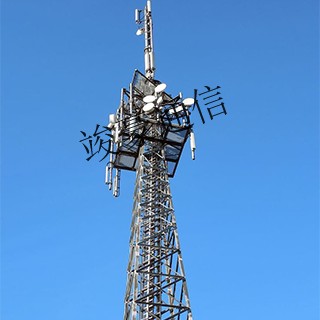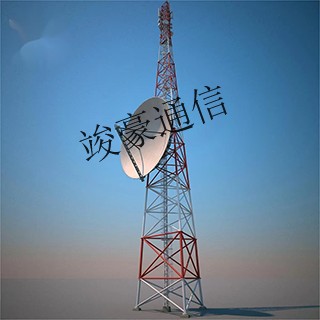






Cells on wheels (COW), or site on wheels,[1] are telecom infrastructures, placed on trailer approved for road use, towed by heavy goods vehicles for loads of up to 3500 kg. These mobile radio base stations guarantee full operation in just one day and in restricted spaces. COWs provide fully functional service, via vehicles such as trailers, vans and trucks, to areas affected by natural disaster or areas with large user volume, such as major events. The backhaul to the network can be via terrestrial microwave, communication satellite, or existing wired infrastructure.
Mobile radio base stations with flanged poles are mobile support structures composed of a special trailer with retracting stabilizers approved for road use. The antenna supporting pole, with a climbing ladder up to the summit, is fixed to the main base frame and is composed of cylindrical flanged sections integrated by two or three sets of guys with a standard height of up to 20 meters. The flanged pole mobile station, installable in eight hours, does not require civil work or foundations and is complete with lateral ballast concrete weights and a working platform in checkered plate.
A rapid deployment self-mounting pole is a mobile supporting structure that corresponds to a special two-axle trailer with telescopic stabilizers approved for road traffic. The antenna supporting pole, with a standard height of up to 20 m, is made of aluminium and consists of three telescopic tubular elements. Installation is easy and fast and is carried out with manual winches.










